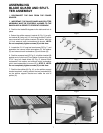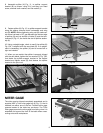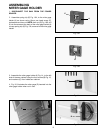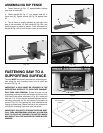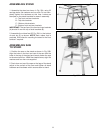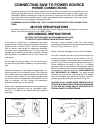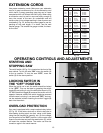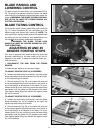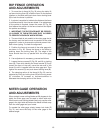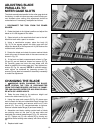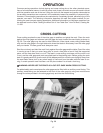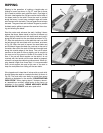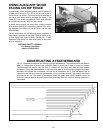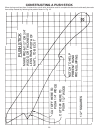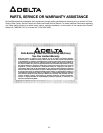
Fig. 40
USING AUXILIARY WOOD
FACING ON RIP FENCE
It is necessary when performing some special operations
to add wood facing (A) Fig. 40, to one or both sides of
the rip fence, as shown. The wood facing is attached to
the fence with wood screws through the holes in the
fence. 3/4 inch stock is suitable for most work although
an occasional job may require 1 inch facing.
A wood facing should be used when ripping material
such as thin paneling to prevent the material from catch-
ing between the bottom of the rip fence and the saw
table surface.
Further information on the safe and proper operation of
table saws is available in the Delta “Getting the Most Out
of Your Table Saw” How-To-Book, Catalog No. 11-400.
Additional information on table saw safety is also avail-
able by writing to:
NATIONAL SAFETY COUNCIL
1121 Spring Lake Drive
Itasca, IL 60143-3201
Fig. 41
CONSTRUCTING A FEATHERBOARD
Fig. 41, illustrates dimensions for making a typical featherboard. The material which the feather-
board is constructed of, should be a straight piece of wood that is free of knots and cracks.
Featherboards are used to keep the work in contact with the fence and table and help prevent
kickbacks. Clamp the featherboards to the fence and table so that the leading edge of the feath-
erboards will support the workpiece until the cut is completed. An 8" high flat board can be
clamped to the rip fence and the featherboard can be clamped to the 8" high board. Use feath-
erboards for all non “thru-sawing” operations where the guard and splitter assembly must be
removed. Always replace the guard and splitter assembly when the non thru-sawing operation is
completed.
A
19



